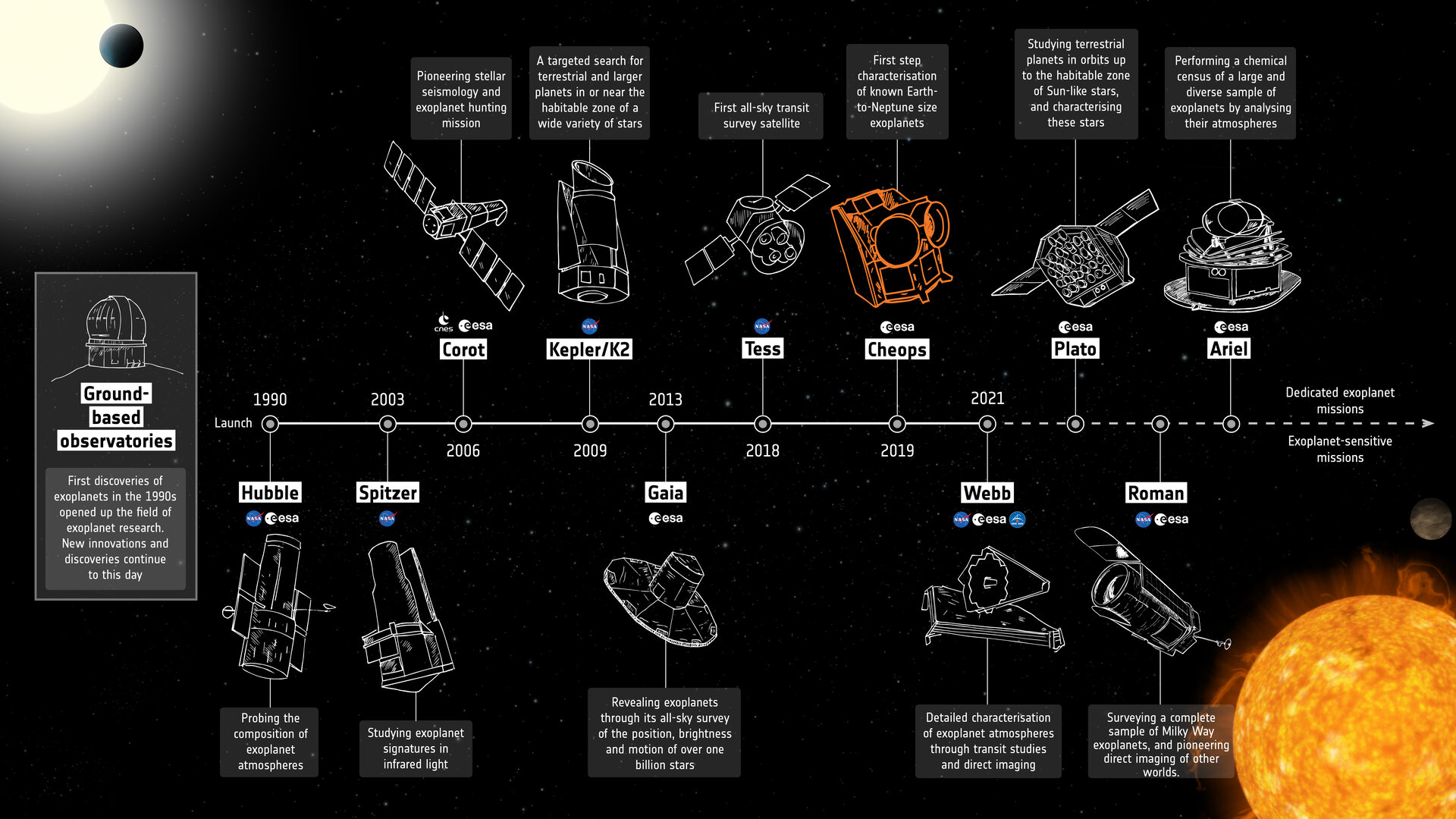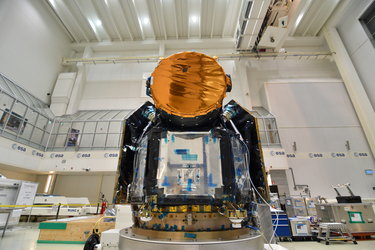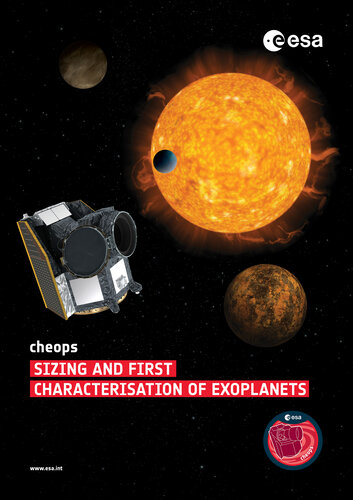The first of three
Launched 18 December 2019, Cheops is the first of three dedicated exoplanet satellites planned for launch by ESA. It will be followed by Plato and Ariel – each tackling a unique aspect of exoplanet science. While Cheops is following up on exoplanets discovered by other missions, it is also designed to identify the best candidates for detailed study by future missions and observatories.
For example, it is providing targets for the international James Webb Space Telescope, which launched 25 December 2021, and is being used to search for the signatures of water and methane – important elements in our quest for signs of habitability.
Plato, the PLAnetary Transits and Oscillations of stars mission, is a next-generation planet hunter with an emphasis on the properties of rocky planets in orbits up to the ‘habitable zone’ (i.e. where liquid water can exist on the planet’s surface) around Sun-like stars, but it will also investigate seismic activity in stars. This will enable precise characterisation of the planet’s host star, including its age, providing insight into the age and evolutionary state of the planet system.
Ariel, the Atmospheric Remote-sensing Infrared Exoplanet Large-survey mission, is foreseen to take exoplanet characterisation one step further, performing a chemical census of a large and diverse sample of exoplanets by analysing their atmospheres. This will enable the study of exoplanets both as individuals and, importantly, as populations, in greater detail than ever.
Together with Cheops, these future missions will keep ESA at the forefront of exoplanet research well beyond the next decade, and will build on answering the fundamental question: what are the conditions for planet formation and the emergence of life?
Read more about future exoplanet missions here















 Germany
Germany
 Austria
Austria
 Belgium
Belgium
 Denmark
Denmark
 Spain
Spain
 Estonia
Estonia
 Finland
Finland
 France
France
 Greece
Greece
 Hungary
Hungary
 Ireland
Ireland
 Italy
Italy
 Luxembourg
Luxembourg
 Norway
Norway
 The Netherlands
The Netherlands
 Poland
Poland
 Portugal
Portugal
 Czechia
Czechia
 Romania
Romania
 United Kingdom
United Kingdom
 Slovenia
Slovenia
 Sweden
Sweden
 Switzerland
Switzerland






























